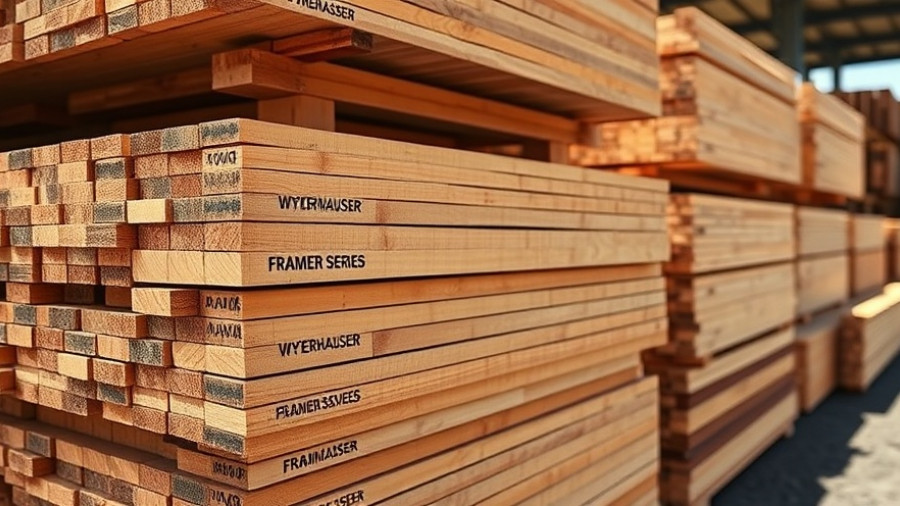
Exploring Weyerhaeuser Framer Series Lumber: A Game Changer for Builders
As building standards evolve and the demand for sustainable materials grows, builders are increasingly curious about their material options. One product garnering interest is Weyerhaeuser's Framer Series lumber, particularly for those in climate-sensitive locations like Kentucky. This innovative lumber promises predictable performance, eliminating the guesswork that often comes with traditional options.
The Unique Benefits of Framer Series Lumber
Weyerhaeuser's Framer Series stands out because it is made using a patented grading system that ensures precision. This computerized grading process minimizes the risk of warp and guarantees that each board is straight. This means fewer callbacks and a more efficient construction process for builders, saving both time and money. With lumber sourced from Sustainable Forestry Initiative (SFI) certified mills, green builders can also feel confident about their environmental impact.
Comparing Alternatives: Is Douglas Fir Worth It?
In discussions among builders, the debate often arises between using Weyerhaeuser Framer Series lumber versus traditional Douglas Fir joists. Douglas Fir is known for its strength and stability, but it's not as commonly used due to its price point and regional availability. While some builders swear by its performance for dimensional stability, others suggest that the Framer Series offers a compelling alternative thanks to its engineered properties that guarantee quality and minimize deflection—all at a more economical price.
Real Feedback from Builders
When asking about experiences with Weyerhaeuser Framer Series, a range of opinions emerge. Some professionals highlight its ease of use, particularly in regions like Kentucky where Southern Yellow Pine is prevalent. They find that Framer Series lumber allows for streamlined installation without the hassle of culling and sorting. Builders emphasize the consistency and reliability of this lumber in achieving a solid floor, which is critical in ensuring the comfort and longevity of the building.
Considerations for Wall Framing: SYP vs. SPF
Your choice of framing material can significantly impact your build. While Spruce-Pine-Fir (SPF) is often considered a go-to for wall structures, Southern Yellow Pine (SYP)—like the Weyerhaeuser Framer Series—might be a better fit depending on your local area. Many builders report that SYP, when well-executed, competes favorably with SPF for structural integrity. It's essential to consult with local experts to gauge which material would best suit your specific climate and design.
Conclusion: Making Informed Choices
Choosing the right lumber can be daunting, especially with significant investments at stake. Weyerhaeuser's Framer Series lumber offers predictable performance and sustainability without compromising quality. For builders, especially those aiming for an efficient, environmentally conscious project, it stands as a strong contender among traditional lumber options.
As you consider your next build, weighing the pros and cons of available materials will help you make informed decisions that align with your project goals. Whether you opt for Framer Series lumber or another option, staying updated on advancements in materials will ensure you build smarter and greener.
 Add Row
Add Row  Add
Add 




Write A Comment